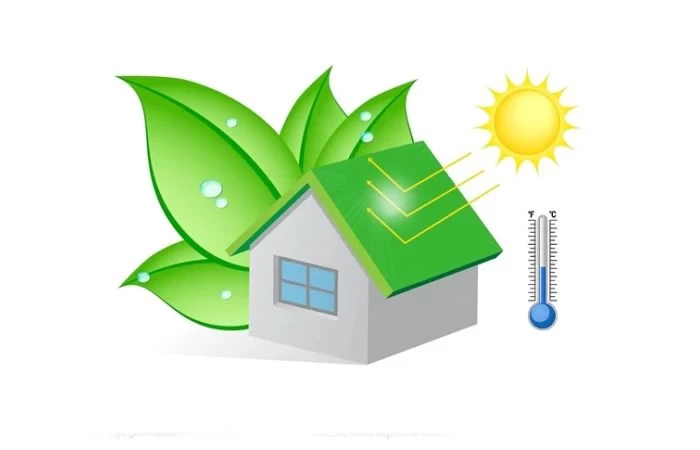The constant flow of hot air in our homes and cities in general during the summer periods affects our sense of thermal comfort (whether indoors or outdoors), our health, our energy consumption and our income.
In recent years there has been a large increase of air conditioning units in the southern European region, with direct consequences for electricity costs and disruption of the energy balance.
Reflective insulation and cool roofs in general, solve the problem and save energy and money for citizens.
How does Reflective Insulation work?
The applied materials over the surface of the roof remain cool under the sun, by reflecting solar radiation during the day and expelling stored heat in the form of infrared radiation during the night.
Unlike conventional systems on the surface to which there can be a temperature rise of up to 30 degrees Celsius, above the ambient temperature during the summer months, the temperature of a surface to which the reflective insulation system has been applied remains equal to or very close to the ambient temperature, even during the hottest summer days.
Where can the reflective insulation system be applied?
This method can be applied to rooftops, roofs and walls, in any shade you desire.
If I paint the surface with a white color, will I achieve the desired reflection of solar radiation? The first year yes, but after that the hard part starts.
Any white paint gives a good coefficient of heat reflection, but as the time goes on, and especially from the second year onwards, this coefficient decreases geometrically. In Contrast, with the Insuladd paint additive insulator we achieve permanent heat reflection of up to 95% and with no limit of white paint.
Why choose Reflective Insulation
Simply because the benefits to both the environment and to each individual are many:
- The need for cooling in air-conditioned buildings is reduced, resulting in a reduction in the emission of pollutants to the outdoor environment.
- Thermal comfort is significantly improved in buildings without air conditioning.
- The lifetime of any layer (concrete slab, older insulation) underneath the system is increased due to reduced thermal stress.
- Helps to confront the urban heat island effect (less heat is transferred to the surrounding area).
- Improved thermal comfort conditions in urban outdoor spaces.
Find out more about our company's innovative COOL ROOF SYSTEM by clicking here.


